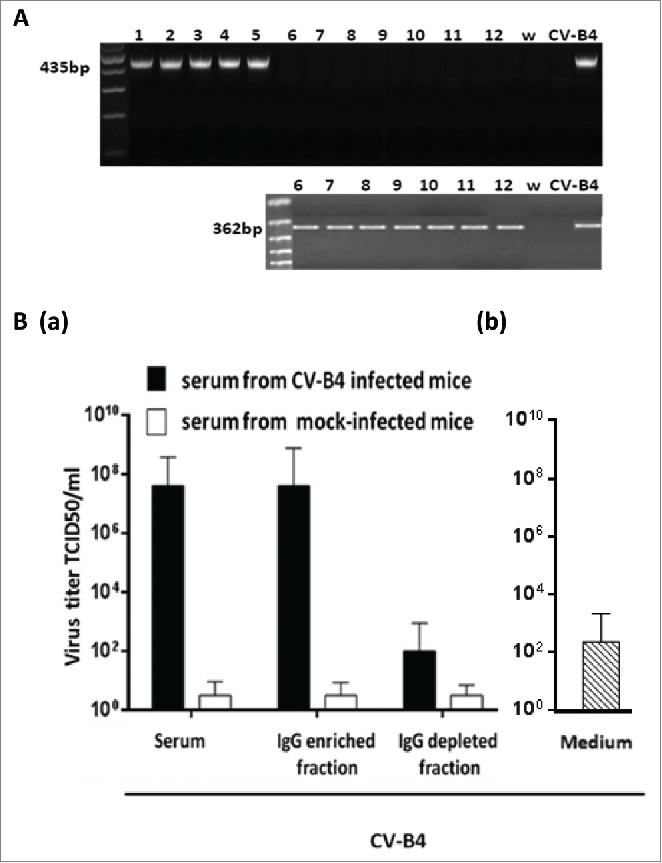Figure 5.

Enhancing activity of serum-derived IgG from CV-B4 E2-inoculated mice. Spleen cells cultures were inoculated with CV-B4 E2, CV-B4 E2 mixed with IgG-enriched or IgG-depleted fractions of serum (diluted 1:1,000) from CV-B4 E2-infected mice or mixed with serum from control mice. (A) Detection of intracellular viral RNA. Agarose gel electrophoresis of amplicons resulting from RT-PCR (top) and semi-nested-RT-PCR (bottom) are presented. Spleen cells cultures were inoculated with: CV-B4 E2, MOI=0.02, in presence of IgG-enriched (1, 2, 3, 4 and 5) or IgG-depleted (6, 7, 8, 9 and 10) serum collected on day 14 post-infection from 5 CV-B4 E2-infected mice, or CV-B4 E2 (11), or CV-B4 E2 in presence of serum from control mice (12).Supernatant of CV-B4 E2-infected HEp-2 cell culture (CV-B4), sterile water (W). (B) Levels of infectious particles in supernatants of spleen cell cultures. Spleen cells cultures were incubated with medium containing CV-B4 E2 mixed with mouse serum, IgG-enriched or IgG-depleted fractions of mouse serum (dilution 1/1000) obtained from CV-B4 E2-infected mice (black bars) or mock-infected mice (white bars) on day 14 post-infection (a) or with medium containing CV-B4 E2 (b). The MOI was 0.02. Culture supernatant samples were harvested 3 days after inoculation. IgG-enriched and IgG-depleted fractions of serum were obtained by using Protein G affinity chromatography. The results are mean + SD (n=3) of virus titers determined on HEp-2 cells by limiting dilution assay for 50% tissue culture infectious doses (TCID50).
